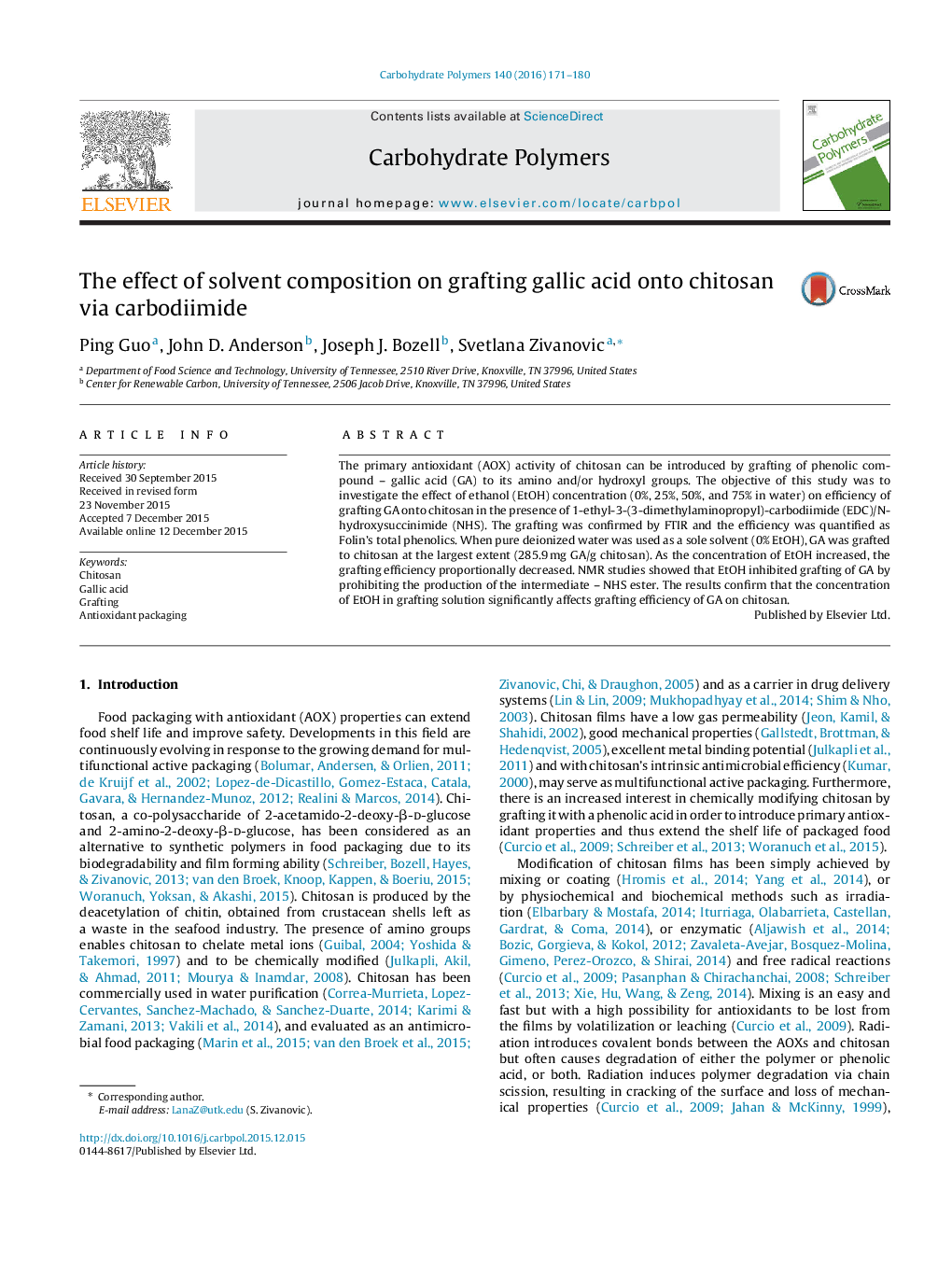| Article ID | Journal | Published Year | Pages | File Type |
|---|---|---|---|---|
| 1383449 | Carbohydrate Polymers | 2016 | 10 Pages |
•The grafting efficiency of gallic acid to chitosan via carbodiimide is highest if the reaction is conducted in pure water (285.9 mg GA/g chitosan).•Increasing concentration of EtOH up to 75% reduces the grafting efficiency, DPPH activity, and reducing power of the grafted GA-chitosan.•The NMR studies showed that ethanol inhibits grafting of gallic acid by prohibiting the conversion of the intermediate O-acylisourea ester to a more stable but reactive NHS ester.
The primary antioxidant (AOX) activity of chitosan can be introduced by grafting of phenolic compound – gallic acid (GA) to its amino and/or hydroxyl groups. The objective of this study was to investigate the effect of ethanol (EtOH) concentration (0%, 25%, 50%, and 75% in water) on efficiency of grafting GA onto chitosan in the presence of 1-ethyl-3-(3-dimethylaminopropyl)-carbodiimide (EDC)/N-hydroxysuccinimide (NHS). The grafting was confirmed by FTIR and the efficiency was quantified as Folin's total phenolics. When pure deionized water was used as a sole solvent (0% EtOH), GA was grafted to chitosan at the largest extent (285.9 mg GA/g chitosan). As the concentration of EtOH increased, the grafting efficiency proportionally decreased. NMR studies showed that EtOH inhibited grafting of GA by prohibiting the production of the intermediate – NHS ester. The results confirm that the concentration of EtOH in grafting solution significantly affects grafting efficiency of GA on chitosan.
